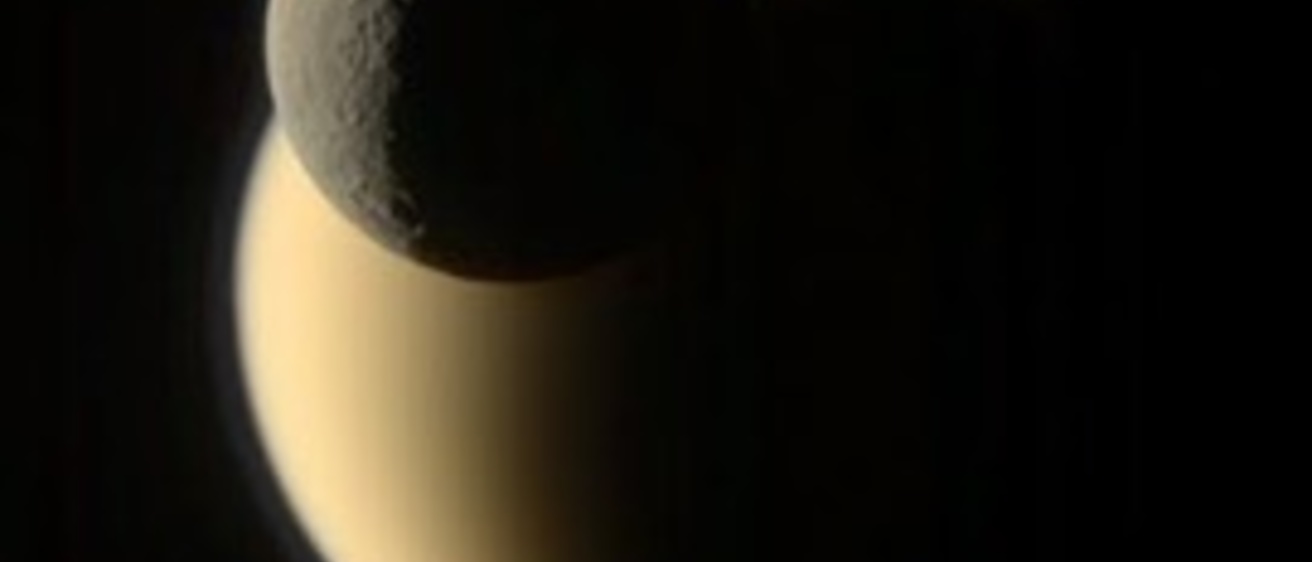
Breadcrumb
- Home
- Labs
- Observational Labs
- Observing the Giant Planets
- Part 1: Identifying Moons
Part 1: Identifying Moons
Exercises
This lab requires two types of images of each of Jupiter and Saturn - a "shallow" (short exposure time) image to study features on the planet itself and a "deep" (long exposure time) image that saturates the planet but allows us to identify the planet's biggest moons. For this part of the lab, you will need to make use of your "deep" images of Saturn (Saturn's moons Titan and Rhea are shown to the right) and Jupiter.
- Identify the moons of Saturn and Jupiter visible in your images.
- List five facts about the different moons you identify.
- Make a diagram showing Jupiter and Saturn, along with their moons, as viewed from above during your observation. Indicate the direction to Earth as well.
Identifying the Moons
The simplest way to identify which moons are which in your image is to use an observatory program. Set the date and time in the program to those of your observation, and the viewing location to that of the telescope. The program will compute the positions of the moons on that date for you.
Use the program to find the planet you are interested in and zoom in to see the moons. Match up the moons with those in your image. Keep in mind that the telescope has to tilt as it points at different parts of the sky, so your image may not be oriented the same way as shown in the observatory program.